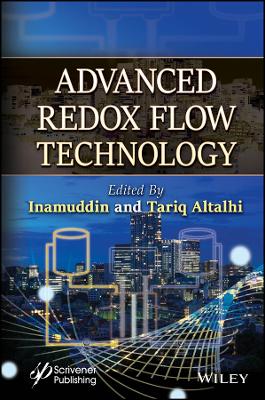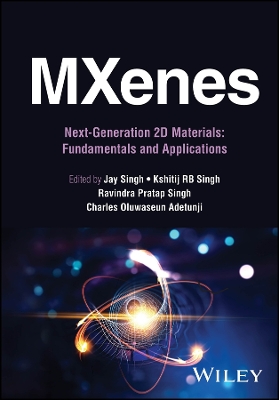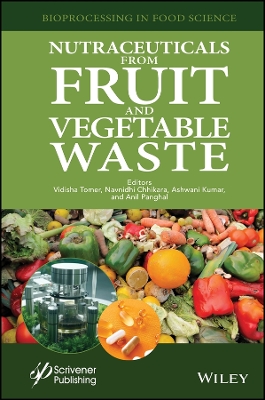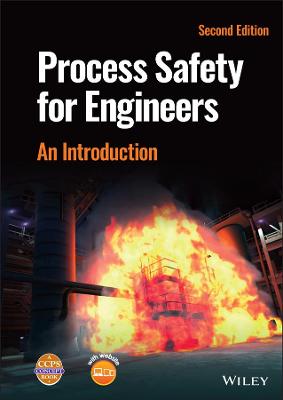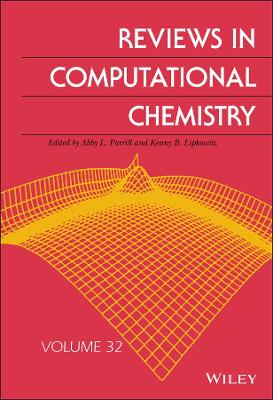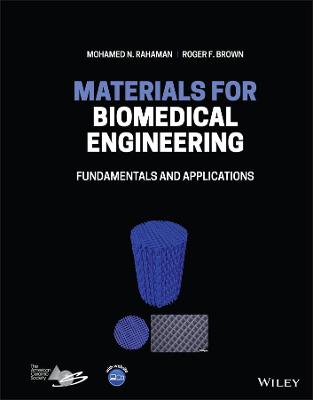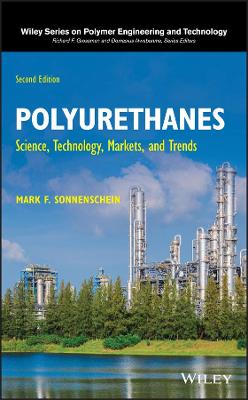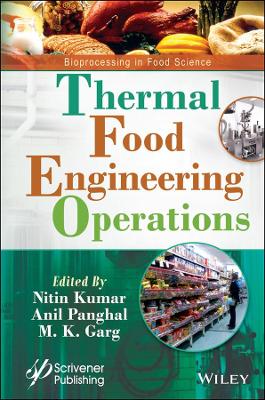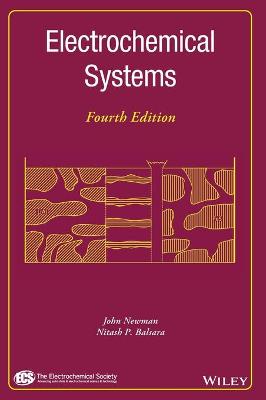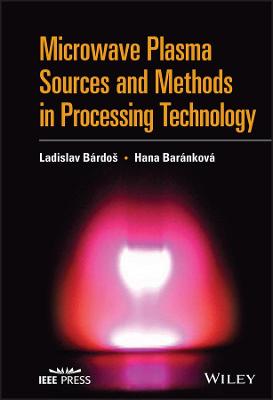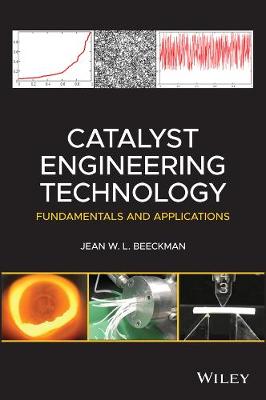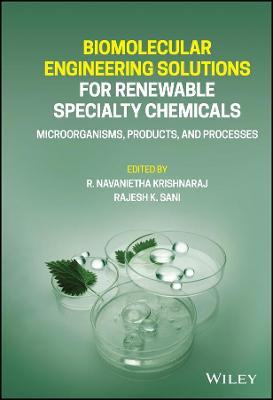Plastics Waste Management
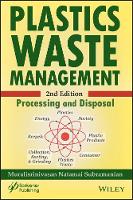 -15%
portes grátis
-15%
portes grátis
Plastics Waste Management
Processing and Disposal
Subramanian, Muralisrinivasan Natamai
John Wiley & Sons Inc
09/2019
270
Dura
Inglês
9781119555872
15 a 20 dias
546
1 Introduction 1
References 4
2 Plastics and Additives 7
2.1 Polymers 7
2.2 Plastics 8
2.3 Plastics Raw Material 9
2.4 Thermoplastics 9
2.4.1 Polyolefin 10
2.4.1.1 Polyethylene 11
2.4.1.2 Polypropylene 12
2.4.1.3 Polystyrene 14
2.4.1.4 Polyvinyl Chloride 14
2.4.2 Polyester 16
2.4.3 Polycarbonate 17
2.4.4 Polyamide 18
2.4.5 Biodegradable Plastics 18
2.5 Thermosets 19
2.5.1 Phenol-formaldehyde 20
2.5.2 Unsaturated Polyester 20
2.6 Additives 20
2.6.1 Antioxidants 22
2.6.2 Slip Additives 22
2.6.3 Ultraviolet Stabilizers 23
2.6.4 Heat Stabilizers 23
2.6.5 Plasticizers 24
2.6.6 Lubricants 25
2.6.7 Flame Retardants 25
2.6.8 Mold Release Agents 26
2.6.9 Nucleating Agents 28
2.6.10 Fillers 29
2.7 Plastics - Applications 29
2.8 Remarks 30
References 30
3 Plastics and Environment 37
3.1 Plastics and Conventional Materials - Comparison 37
3.2 Effects of Plastics Products and Environment 39
3.3 Landsite Effects 39
3.4 Chemical Environment 39
3.5 Marine Environment 40
3.6 Packaging Materials 42
3.7 Agricultural Fields 42
3.8 Waste Accumulation 43
3.9 Degradation of Plastics 43
3.9.1 Process Degradation 43
3.9.2 Environmental Degradation 45
3.10 Environmental Burdens 46
3.11 Industrial Ecosystem 47
3.12 Remarks 47
References 47
4 Plastics Processing Technology 53
4.1 Background 53
4.2 Management - Plastics Processing 54
4.3 Plastic Materials - Variations 55
4.4 Technology 56
4.4.1 Injection Molding 58
4.4.2 Blow Molding 60
4.4.3 Extrusion 62
4.4.4 Thermoforming 63
4.4.5 Rotational Molding 64
4.4.6 Compression Molding 66
4.5 Productivity and Task 67
4.6 Waste Processing 68
4.7 Reprocess Material in Plastics Processing 69
4.8 Challenges and Opportunities 70
4.9 Remarks 71
References 71
5 Plastics Waste - Consumer and Industry 73
5.1 Background 74
5.2 Plastics Waste 74
5.3 Polyolefin 75
5.4 Polypropylene 76
5.5 Polystyrene 76
5.6 Polyvinylchloride 76
5.7 Bioplastics 77
5.8 Additives and Environment 78
5.8.1 Heat Stabilizers 78
5.8.2 Plasticizers 78
5.8.3 Flame Retardants 79
5.8.4 Compatibilizers 79
5.9 Technological Aspects 80
5.10 Factors Influencing Plastics Waste 80
5.11 Waste Resources 81
5.11.1 Domestic Waste 81
5.11.2 Packaging Waste 82
5.11.3 E-Waste 83
5.11.4 Automotive Waste 84
5.11.5 Medical Plastics Waste 84
5.11.6 Agriculture Plastics Waste 85
5.11.7 Marine Plastics Waste 85
5.11.8 Mixed or Contaminated Plastics 86
5.12 Plastics Waste Reduction 86
5.13 Advantages of Waste Prevention 88
5.14 Waste Reduction and Performance 89
5.15 Recovery of Plastics 89
5.16 Remarks 90
References 91
6 Plastics Waste Management 97
6.1 Principles 97
6.2 Objective 98
6.3 Requirements 98
6.4 Management Concept 99
6.5 Waste Collection 99
6.6 Separation and Cleaning 100
6.7 Scientific Thinking 101
6.8 Outcome 101
6.9 Effective Management 101
6.10 Dynamic Thinking 102
6.11 Multi-Phase Approach 103
6.12 Significance 103
6.13 Progressive Management Characteristics 104
6.14 Risks in Plastics Waste Management 105
6.15 Factors - Affect, Suffer, and Influence 105
6.16 Operational Problems 106
6.17 Sustainability and Symbolic Management 106
6.18 Environmental Conservation 107
6.19 Decision-Making Process 107
6.20 Integrated Plastics Waste Management 108
6.21 Assignments 109
6.22 Advantages 110
6.23 Shortcomings 111
References 112
7 Recycling Technology 115
7.1 Man-Made Material - Plastics 116
7.2 Substantial Prerequisite 117
7.3 Philosophy 117
7.4 Purpose of Recycling Technology 118
7.5 Fortune of Plastics Material 119
7.6 Methods of Recycling 119
7.7 Plastics Waste - Stream 121
7.8 Mixed Plastics Waste - Separation 123
7.9 Origination of Plastics Waste 124
7.10 Problems of Recycling and Controls 125
7.10.1 Problems 125
7.10.2 Controls 126
7.11 Physical Characterization and Identification 126
7.12 Recycling - A Resource 127
7.13 Recycling Technology 128
7.14 Primary Recycling 129
7.14.1 Reprocessing Essentials 130
7.15 Mechanical Recycling 130
7.15.1 Limitations 132
7.15.2 Processing Problems 132
7.16 Chemical Recycling 133
7.17 Energy Recovery 136
7.18 Pyrolysis 136
7.19 Types of Reactors and Process Design 140
7.19.1 Batch and Semi-Batch Reactor 140
7.19.2 Fluidized Bed Reactor 141
7.19.3 Conical Spouted Bed Reactor 142
7.19.4 Two-Stage Pyrolysis System 142
7.19.5 Microwave-Assisted Pyrolysis (MAP) 143
7.19.6 Pyrolysis in Supercritical Water (SCW) 144
7.19.7 Fluid Catalytic Cracking 144
7.20 Thermal Co-Processing 145
7.20.1 Advantages 146
7.21 Gasification 146
7.22 Plastics Waste and Recycling 147
7.22.1 Polyolefin 147
7.22.2 Polyvinyl Chloride 148
7.22.3 Polyethylene Terephthalate 148
7.23 Environmental Burdens 150
7.23.1 Incineration - Open Air 150
7.23.2 Plastics Waste in Concrete 151
7.23.3 Plastics Waste in Tar for Road Laying 151
7.24 Plastics Waste as Blends and Composites 152
7.25 Remarks 153
References 153
8 Economy and Recycle Market 163
8.1 Economical Background 163
8.2 Growth Trajectory 164
8.3 Value of Plastics Waste 164
8.4 Economic Issues 165
8.5 Market Dynamics and Uncertainty 166
8.6 Fiscal Waste 167
8.7 Waste to Value 168
8.8 Industrial Ecology 169
8.9 Industrial Symbioses (ISs) 170
8.10 Economic Advantages 171
8.11 Economic Implications 171
8.12 Marketing Strategy 172
8.13 Modern Marketing Philosophy 173
8.14 Recycled Plastics Market 173
8.15 Industrial Marketing 175
8.16 Product Development and Marketing 176
8.17 Recycled Plastic Products and Consumer Market 177
8.18 Remarks 178
References 179
9 Life Cycle Assessment 183
9.1 LCA and Plastics Waste 183
Background 184
9.2 Life Cycle Assessment - A Tool to Assess Waste 185
9.3 Scientific Engineering 187
9.4 Purpose 187
9.5 Harmonization of LCA Method 188
9.6 Methodology 188
9.7 LCA Initiation 189
9.8 LCA in Plastics Waste 190
9.9 Advantages of LCA 191
9.10 Shortcomings of LCA 191
9.11 Environment Waste Auditing 192
9.12 Waste Prevention 193
9.13 Remarks 194
References 194
10 Case Studies 199
10.1 Waste Dump and Health Hazards 199
10.2 Utilization of Plastics Waste 200
10.2.1 Europe 201
10.2.2 India 201
10.2.3 Japan 202
10.2.4 France 203
10.2.5 Other Countries 204
10.3 Use of Case Studies 205
10.4 Property Value 206
10.5 Case Study 1: Plastics Waste from the Electric and Electronic Field 206
10.5.1 Concept 206
10.5.2 Objective 207
10.5.3 Methodology 207
10.5.4 Experimental Method 208
10.5.5 Results 210
10.5.6 Conclusion 210
10.6 Case Study 2: Plastics Waste from the Automobile Industry 210
10.6.1 Background 210
10.6.2 Design 211
10.6.3 Disposal and Recovery 211
10.6.3.1 Recycling of Bumpers 211
10.6.4 Inference 211
10.7 Pros and Cons 213
10.7.1 Positive Thinking 213
10.7.2 Negative Effects 213
10.8 Research and Case Study 214
10.9 Remarks 214
References 215
11 Present Trends 219
11.1 Economic Issues 219
11.2 Industry and Society 220
11.3 Landfilling 220
11.4 Effect of Single-Use Plastic Products 221
11.5 Effect on Food Packaging 221
11.6 Recycling Status 222
11.7 Present Research and Shortcomings 222
11.8 Population Growth and Waste 223
11.9 Remarks 224
References 224
12 Future Trends 227
12.1 Present Problems 227
12.2 Incineration in Open Air 228
12.3 Environmental Advantages 229
12.4 Plastics Waste - Challenge 229
12.5 Environmental and Social Problems - Prevention 230
12.6 Reasons - Waste Accumulation 231
12.7 Ecological Issues 232
12.8 Facts about Bioplastics 232
12.9 Future Requirements 233
12.10 Remarks 234
References 235
Index 237
1 Introduction 1
References 4
2 Plastics and Additives 7
2.1 Polymers 7
2.2 Plastics 8
2.3 Plastics Raw Material 9
2.4 Thermoplastics 9
2.4.1 Polyolefin 10
2.4.1.1 Polyethylene 11
2.4.1.2 Polypropylene 12
2.4.1.3 Polystyrene 14
2.4.1.4 Polyvinyl Chloride 14
2.4.2 Polyester 16
2.4.3 Polycarbonate 17
2.4.4 Polyamide 18
2.4.5 Biodegradable Plastics 18
2.5 Thermosets 19
2.5.1 Phenol-formaldehyde 20
2.5.2 Unsaturated Polyester 20
2.6 Additives 20
2.6.1 Antioxidants 22
2.6.2 Slip Additives 22
2.6.3 Ultraviolet Stabilizers 23
2.6.4 Heat Stabilizers 23
2.6.5 Plasticizers 24
2.6.6 Lubricants 25
2.6.7 Flame Retardants 25
2.6.8 Mold Release Agents 26
2.6.9 Nucleating Agents 28
2.6.10 Fillers 29
2.7 Plastics - Applications 29
2.8 Remarks 30
References 30
3 Plastics and Environment 37
3.1 Plastics and Conventional Materials - Comparison 37
3.2 Effects of Plastics Products and Environment 39
3.3 Landsite Effects 39
3.4 Chemical Environment 39
3.5 Marine Environment 40
3.6 Packaging Materials 42
3.7 Agricultural Fields 42
3.8 Waste Accumulation 43
3.9 Degradation of Plastics 43
3.9.1 Process Degradation 43
3.9.2 Environmental Degradation 45
3.10 Environmental Burdens 46
3.11 Industrial Ecosystem 47
3.12 Remarks 47
References 47
4 Plastics Processing Technology 53
4.1 Background 53
4.2 Management - Plastics Processing 54
4.3 Plastic Materials - Variations 55
4.4 Technology 56
4.4.1 Injection Molding 58
4.4.2 Blow Molding 60
4.4.3 Extrusion 62
4.4.4 Thermoforming 63
4.4.5 Rotational Molding 64
4.4.6 Compression Molding 66
4.5 Productivity and Task 67
4.6 Waste Processing 68
4.7 Reprocess Material in Plastics Processing 69
4.8 Challenges and Opportunities 70
4.9 Remarks 71
References 71
5 Plastics Waste - Consumer and Industry 73
5.1 Background 74
5.2 Plastics Waste 74
5.3 Polyolefin 75
5.4 Polypropylene 76
5.5 Polystyrene 76
5.6 Polyvinylchloride 76
5.7 Bioplastics 77
5.8 Additives and Environment 78
5.8.1 Heat Stabilizers 78
5.8.2 Plasticizers 78
5.8.3 Flame Retardants 79
5.8.4 Compatibilizers 79
5.9 Technological Aspects 80
5.10 Factors Influencing Plastics Waste 80
5.11 Waste Resources 81
5.11.1 Domestic Waste 81
5.11.2 Packaging Waste 82
5.11.3 E-Waste 83
5.11.4 Automotive Waste 84
5.11.5 Medical Plastics Waste 84
5.11.6 Agriculture Plastics Waste 85
5.11.7 Marine Plastics Waste 85
5.11.8 Mixed or Contaminated Plastics 86
5.12 Plastics Waste Reduction 86
5.13 Advantages of Waste Prevention 88
5.14 Waste Reduction and Performance 89
5.15 Recovery of Plastics 89
5.16 Remarks 90
References 91
6 Plastics Waste Management 97
6.1 Principles 97
6.2 Objective 98
6.3 Requirements 98
6.4 Management Concept 99
6.5 Waste Collection 99
6.6 Separation and Cleaning 100
6.7 Scientific Thinking 101
6.8 Outcome 101
6.9 Effective Management 101
6.10 Dynamic Thinking 102
6.11 Multi-Phase Approach 103
6.12 Significance 103
6.13 Progressive Management Characteristics 104
6.14 Risks in Plastics Waste Management 105
6.15 Factors - Affect, Suffer, and Influence 105
6.16 Operational Problems 106
6.17 Sustainability and Symbolic Management 106
6.18 Environmental Conservation 107
6.19 Decision-Making Process 107
6.20 Integrated Plastics Waste Management 108
6.21 Assignments 109
6.22 Advantages 110
6.23 Shortcomings 111
References 112
7 Recycling Technology 115
7.1 Man-Made Material - Plastics 116
7.2 Substantial Prerequisite 117
7.3 Philosophy 117
7.4 Purpose of Recycling Technology 118
7.5 Fortune of Plastics Material 119
7.6 Methods of Recycling 119
7.7 Plastics Waste - Stream 121
7.8 Mixed Plastics Waste - Separation 123
7.9 Origination of Plastics Waste 124
7.10 Problems of Recycling and Controls 125
7.10.1 Problems 125
7.10.2 Controls 126
7.11 Physical Characterization and Identification 126
7.12 Recycling - A Resource 127
7.13 Recycling Technology 128
7.14 Primary Recycling 129
7.14.1 Reprocessing Essentials 130
7.15 Mechanical Recycling 130
7.15.1 Limitations 132
7.15.2 Processing Problems 132
7.16 Chemical Recycling 133
7.17 Energy Recovery 136
7.18 Pyrolysis 136
7.19 Types of Reactors and Process Design 140
7.19.1 Batch and Semi-Batch Reactor 140
7.19.2 Fluidized Bed Reactor 141
7.19.3 Conical Spouted Bed Reactor 142
7.19.4 Two-Stage Pyrolysis System 142
7.19.5 Microwave-Assisted Pyrolysis (MAP) 143
7.19.6 Pyrolysis in Supercritical Water (SCW) 144
7.19.7 Fluid Catalytic Cracking 144
7.20 Thermal Co-Processing 145
7.20.1 Advantages 146
7.21 Gasification 146
7.22 Plastics Waste and Recycling 147
7.22.1 Polyolefin 147
7.22.2 Polyvinyl Chloride 148
7.22.3 Polyethylene Terephthalate 148
7.23 Environmental Burdens 150
7.23.1 Incineration - Open Air 150
7.23.2 Plastics Waste in Concrete 151
7.23.3 Plastics Waste in Tar for Road Laying 151
7.24 Plastics Waste as Blends and Composites 152
7.25 Remarks 153
References 153
8 Economy and Recycle Market 163
8.1 Economical Background 163
8.2 Growth Trajectory 164
8.3 Value of Plastics Waste 164
8.4 Economic Issues 165
8.5 Market Dynamics and Uncertainty 166
8.6 Fiscal Waste 167
8.7 Waste to Value 168
8.8 Industrial Ecology 169
8.9 Industrial Symbioses (ISs) 170
8.10 Economic Advantages 171
8.11 Economic Implications 171
8.12 Marketing Strategy 172
8.13 Modern Marketing Philosophy 173
8.14 Recycled Plastics Market 173
8.15 Industrial Marketing 175
8.16 Product Development and Marketing 176
8.17 Recycled Plastic Products and Consumer Market 177
8.18 Remarks 178
References 179
9 Life Cycle Assessment 183
9.1 LCA and Plastics Waste 183
Background 184
9.2 Life Cycle Assessment - A Tool to Assess Waste 185
9.3 Scientific Engineering 187
9.4 Purpose 187
9.5 Harmonization of LCA Method 188
9.6 Methodology 188
9.7 LCA Initiation 189
9.8 LCA in Plastics Waste 190
9.9 Advantages of LCA 191
9.10 Shortcomings of LCA 191
9.11 Environment Waste Auditing 192
9.12 Waste Prevention 193
9.13 Remarks 194
References 194
10 Case Studies 199
10.1 Waste Dump and Health Hazards 199
10.2 Utilization of Plastics Waste 200
10.2.1 Europe 201
10.2.2 India 201
10.2.3 Japan 202
10.2.4 France 203
10.2.5 Other Countries 204
10.3 Use of Case Studies 205
10.4 Property Value 206
10.5 Case Study 1: Plastics Waste from the Electric and Electronic Field 206
10.5.1 Concept 206
10.5.2 Objective 207
10.5.3 Methodology 207
10.5.4 Experimental Method 208
10.5.5 Results 210
10.5.6 Conclusion 210
10.6 Case Study 2: Plastics Waste from the Automobile Industry 210
10.6.1 Background 210
10.6.2 Design 211
10.6.3 Disposal and Recovery 211
10.6.3.1 Recycling of Bumpers 211
10.6.4 Inference 211
10.7 Pros and Cons 213
10.7.1 Positive Thinking 213
10.7.2 Negative Effects 213
10.8 Research and Case Study 214
10.9 Remarks 214
References 215
11 Present Trends 219
11.1 Economic Issues 219
11.2 Industry and Society 220
11.3 Landfilling 220
11.4 Effect of Single-Use Plastic Products 221
11.5 Effect on Food Packaging 221
11.6 Recycling Status 222
11.7 Present Research and Shortcomings 222
11.8 Population Growth and Waste 223
11.9 Remarks 224
References 224
12 Future Trends 227
12.1 Present Problems 227
12.2 Incineration in Open Air 228
12.3 Environmental Advantages 229
12.4 Plastics Waste - Challenge 229
12.5 Environmental and Social Problems - Prevention 230
12.6 Reasons - Waste Accumulation 231
12.7 Ecological Issues 232
12.8 Facts about Bioplastics 232
12.9 Future Requirements 233
12.10 Remarks 234
References 235
Index 237


